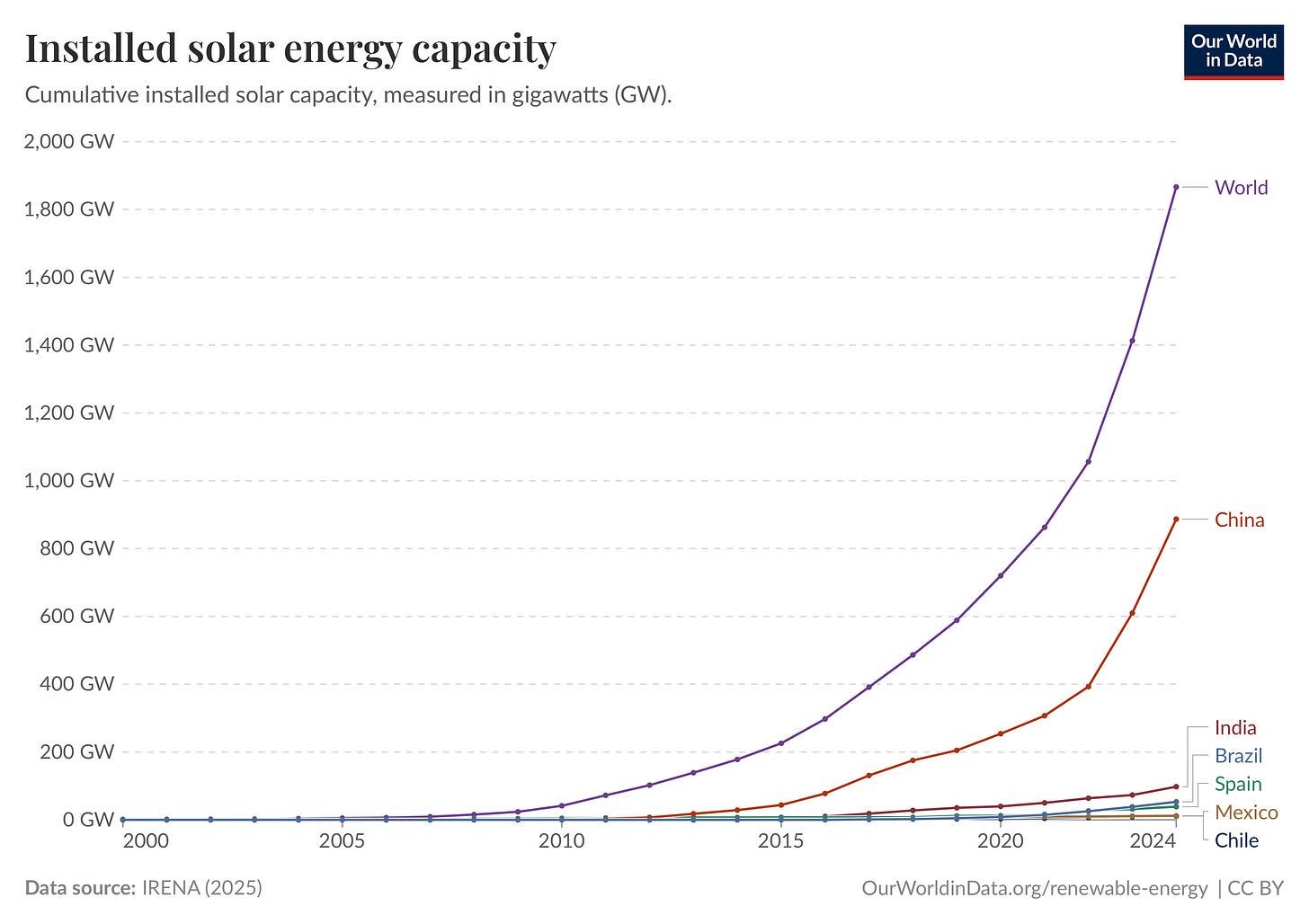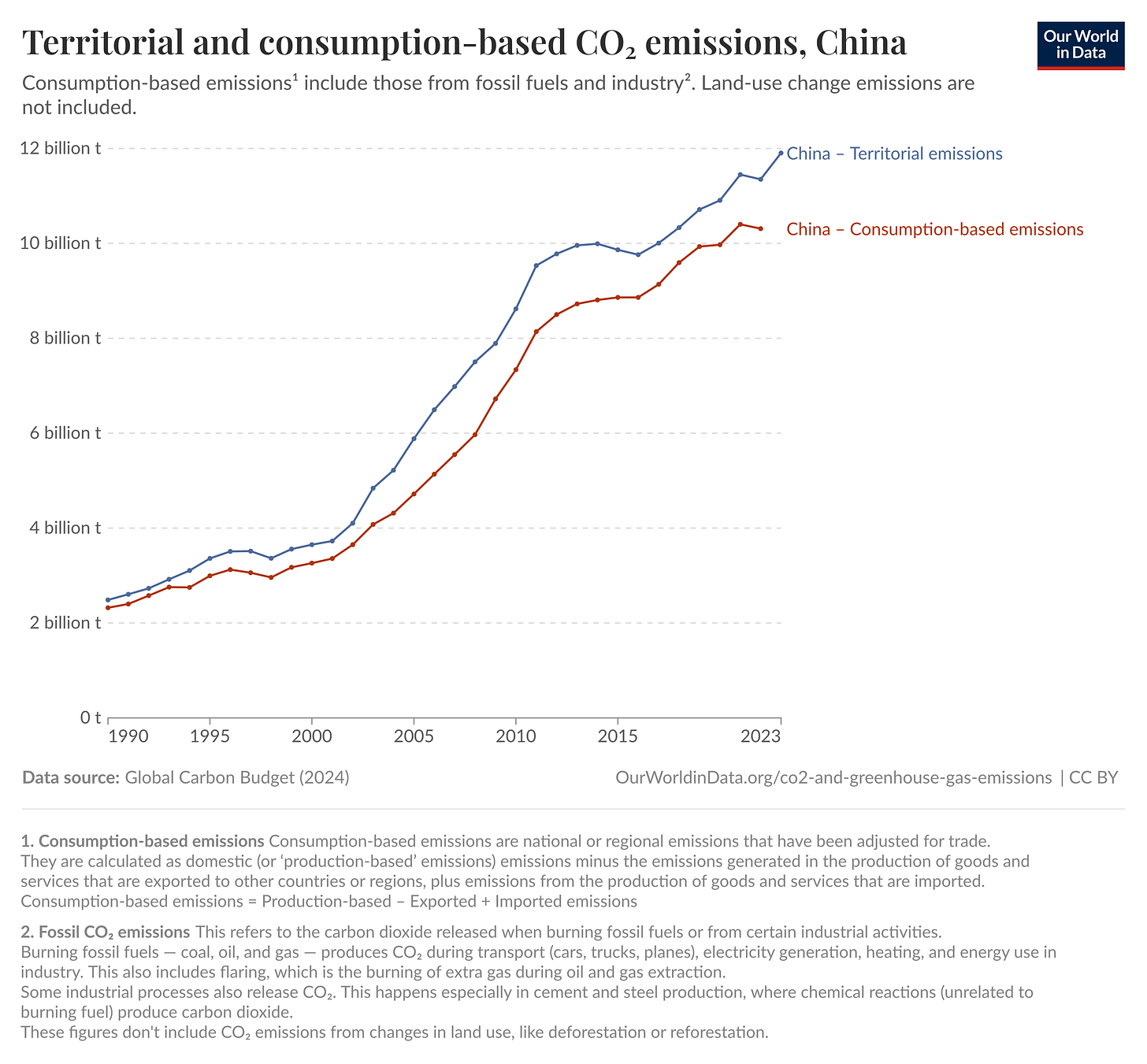Xi's Commitment & China's Energy System
Xi commits to 7% to 10% decline from peak levels by 2035
This should have made more headlines.
China is the world’s largest emitter and, according to available data, emissions continue to rise year over year. That backdrop made last week’s announcement by Chinese president Xi Jinping “that China will reduce greenhouse-gas emissions by 7% to 10% from peak levels by 2035” a notable commitment.
The pledge leaves important questions unanswered. China has not yet reached peak emissions, so the baseline remains undefined, and a 7–10% cut may not align with 2°C or 1.5°C pathways. Still, a rollover in China’s emissions within the next decade would be a major milestone, especially given that coal still supplies over 60% of electricity, more than two-thirds of the country’s CO₂ emissions, and the overall pace of generation growth .
The transformation of China’s energy sector is already visible: solar installations last year exceeded the rest of the world combined. An emissions pledge reflects confidence that this shift will continue, and perhaps accelerate.
Globally this is a big deal as well. China’s consumption based emissions appear to have already peaked. The growth trajectory is preserved by demand for China’s exports. Over the years many high intensity activities have migrated to China (for a host of reasons). A commitment to reduce territorial emissions means those activities are also likely to deliver meaningful reductions.
The point of real interest here is not the emissions target. It is transformation of China’s energy system that it implies. It is the confidence that China’s economic engine can continue to grow while leaning less on coal and more on renewables. That transformation is what makes this pledge one to watch.






